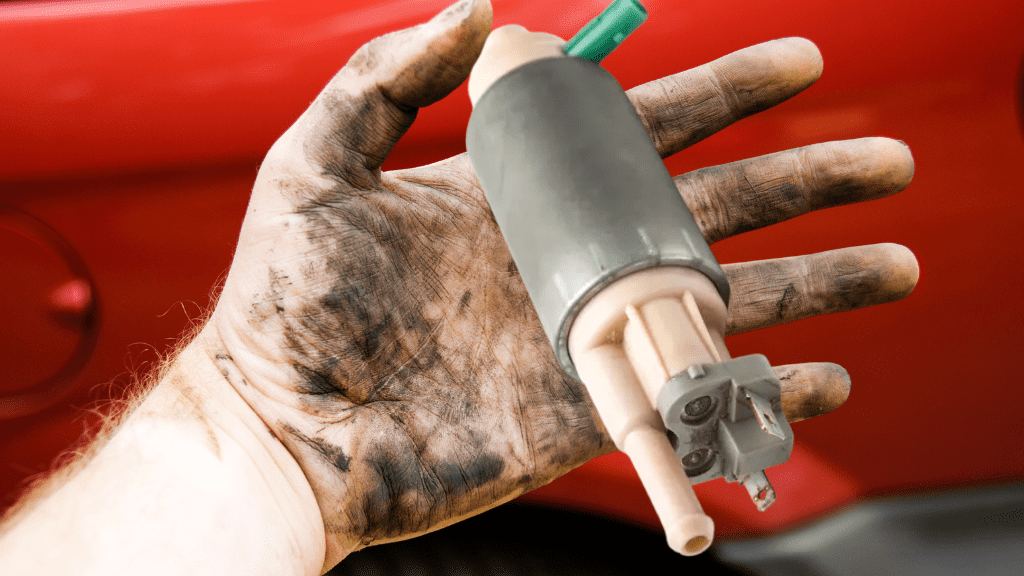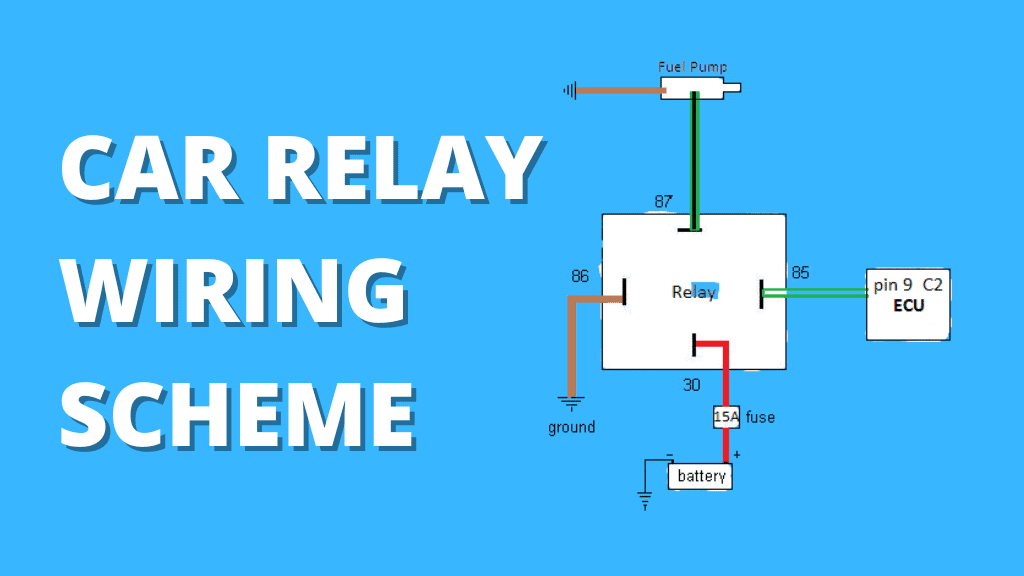How To Test Fuel Pump With Multimeter
Has your car failed to start? Has the “check engine” light been illuminated for a long time?
If your answer to these is yes, then your fuel pump may be the problem.
The fuel pump is an electronic component within your vehicle that feeds your engine with the right amount of fuel from the fuel tank for it to run properly.
If it is bad, your combustion system or entire vehicle simply doesn’t work.
A lot of people don’t know how to test this component and we are here to help.
Let’s get right in.

What Causes Fuel Pump To Go Bad?
Given how the fuel pump works, there are three major factors that cause it to go bad. These are natural wear and tear, contamination, and overheating.
Wear and tear is common with pumps that have been running for ages and are naturally ready for replacement due to weak gears.
Contamination entails a lot of debris and dirt finding its way into your fuel pump system and clogging up the filter.
This prevents the device from drawing and supplying enough fuel to the engine when needed.
Overheating is the most common cause of a fuel pump failing.
A majority of the fuel drawn from your tank is returned to it, with this liquid helping to cool off the whole fuel pump system.
When you constantly run on a low fuel tank, you boycott this cooling-off process, and your pump suffers.
Its electrical components get damaged in the long run, and you then start to notice certain symptoms like poor engine performance, engine overheating, bad fuel efficiency, poor acceleration, or the vehicle failing to start.
These symptoms are the same when you have problems with or need to test your ignition switch or even your PCM.
So, to verify that your pump is the culprit, you run a diagnosis on it.
However, there are certain components, like your fuel pump relay, that are great to check out before diving into the pump itself with a multimeter.

How To Test Fuel Pump Relay With Multimeter
The relay is an electrical component within your combustion system that simply supplies power to the fuel pump when needed.
Testing the relay is an intricate process you want to pay attention to, but it saves you the stress of testing the fuel pump if a problem is found here.
The relay has four pins; the ground pin, the input voltage pin, the load pin (which goes to the fuel pump), and the battery pin.

With this diagnosis, you want to check if the relay performs well by giving out the right amount of voltage. These four pins are important for our test.
- Disconnect The Fuel Pump Relay From Your Vehicle
The relay is typically located in a distributor fuse box close to your car battery or at the vehicle dashboard.
It may be located at other places within your vehicle, so you may want to search the internet to get the precise location for your car model.
Once you find it, you simply disconnect it from the socket to reveal the four pins.
- Get A 12-Volt Power Source
For this test, you will need to use an external power source to supply 12 volts of current to your relay. We want to mimic a situation where it is still plugged into the vehicle. Your car battery is a great 12V source to use.
- Connect Multimeter Probes To Battery And Load Pins
With your multimeter set to the DC voltage range, attach the red multimeter probe to the battery pin and attach the black probe to the load pin.
- Supply Power To Fuel Pump Relay
You will need wires with alligator clips to connect the power source to the relay pins. Be careful here.
Attach the negative wire from the source to the ground pin and attach the positive wire to the input voltage pin.
- Evaluate Results
First of all, you are expected to hear a clicking sound from the relay anytime you supply current to it.
This is a signal that it is working, but in some cases, you still have to carry out further tests with the multimeter.
Looking at the meter, if you don’t get a reading of about 12V, the relay is bad and needs to be changed.
On the other hand, if you see a reading of 12 volts, the relay is in good condition and now, you may move to the fuel pump itself.
How To Test Fuel Pump With Multimeter
Connect the positive multimeter probe to the live fuel pump connector wire, connect the negative probe to a metal surface close by, and turn your ignition to the “on” position without starting the engine. The multimeter should read about 12V if the pump is not defective.
There is a whole lot more with this procedure, as well as other parts to test with the use of a multimeter, and we will get into these in detail.
- Check The Fuel Pump Fuse
Just like the relay, another component you may diagnose that saves you all the stress is the fuse.
This is a 20amp fuse located in your distribution box (the location of this depends on your car).
Your fuel pump will not work if it has a damaged fuse, and you may simply know if your fuse is faulty if it is broken or has a burnt mark.
Alternatively, a multimeter is also useful.
Set your multimeter to the resistance mode, place the multimeter probes on each end of the fuse, and check for a reading.
The resistance mode is usually represented by a “Ω” symbol.
If the multimeter shows you “O.L”, the fuse circuit is bad and needs to be changed.
If you get a value between 0 and 0.5, the fuse is good and you may move to the fuel pump.
- Set The Multimeter To DC Voltage
Your car runs on direct current, so you want to put your multimeter on the DC voltage setting for your tests to be accurate.
Moving forward, we would run two voltage drop tests on the different wire connectors of your fuel pump.
These are the live wire connector and the ground wire connector.
- Put Your Ignition To The “On” Position
Turn your ignition key to the “On” position without starting up the engine.
You only need current to be supplied to the wires of your fuel pump to run tests on it.
- Test The Live Wire Connector
The live wire is the connector that comes from the relay. It is expected to hold the same amount of voltage as your car battery, so you may have to refer to your manual before proceeding with this test.
Regardless, most car batteries are 12 volts, so this is what we work with.
With the multimeter in DC voltage, back probe the positive wire with a pin and attach your red positive multimeter probe to it.
You then ground your black negative probe on any metal surface close by.
If the fuel pump is good or the live wire connector is receiving the right amount of voltage, you expect to see a value of 12 volts.
If the value falls more than 0.5V, then the fuel pump has failed the voltage drop test and needs to be changed.
- Test The Ground Wire Connection
The ground wire is the connector that goes directly to the chassis of your vehicle.
You want to test it to ensure that it is well grounded and that there is no open loop or fault with the fuel pump circuit.
With your black multimeter probe still grounded on a metal surface, back probe the ground wire and attach your red multimeter probe to the back probe pin.
You are expected to get a value of about 0.1 volts from your multimeter.
Any value above 0.5V means the fuel pump is not well grounded and you need to check out the wires for any damage.
Replace or insulate the wire connectors if you find any.
Conclusion
Only if you pay close attention to detail will you be able to test your fuel pump easily. Similar to inspecting other electrical elements.
Frequently Asked Questions
Should A Fuel Pump Have Continuity?
A good fuel pump is expected to have continuity between the positive (live) and negative (ground) wire. Using your multimeter in resistance mode (Ω), you may easily check for the level of resistance or an open loop in the circuit.
What Would Cause A Fuel Pump Not To Get Power?
A damaged fuse will prevent your fuel pump from working. If the pump relay is also damaged, your fuel pump does not get the power it needs to work properly.

Author
Alex Klein is an electrical engineer with more than 15 years of expertise. He is the host of the Electro University YouTube channel, which has thousands of subscribers.
